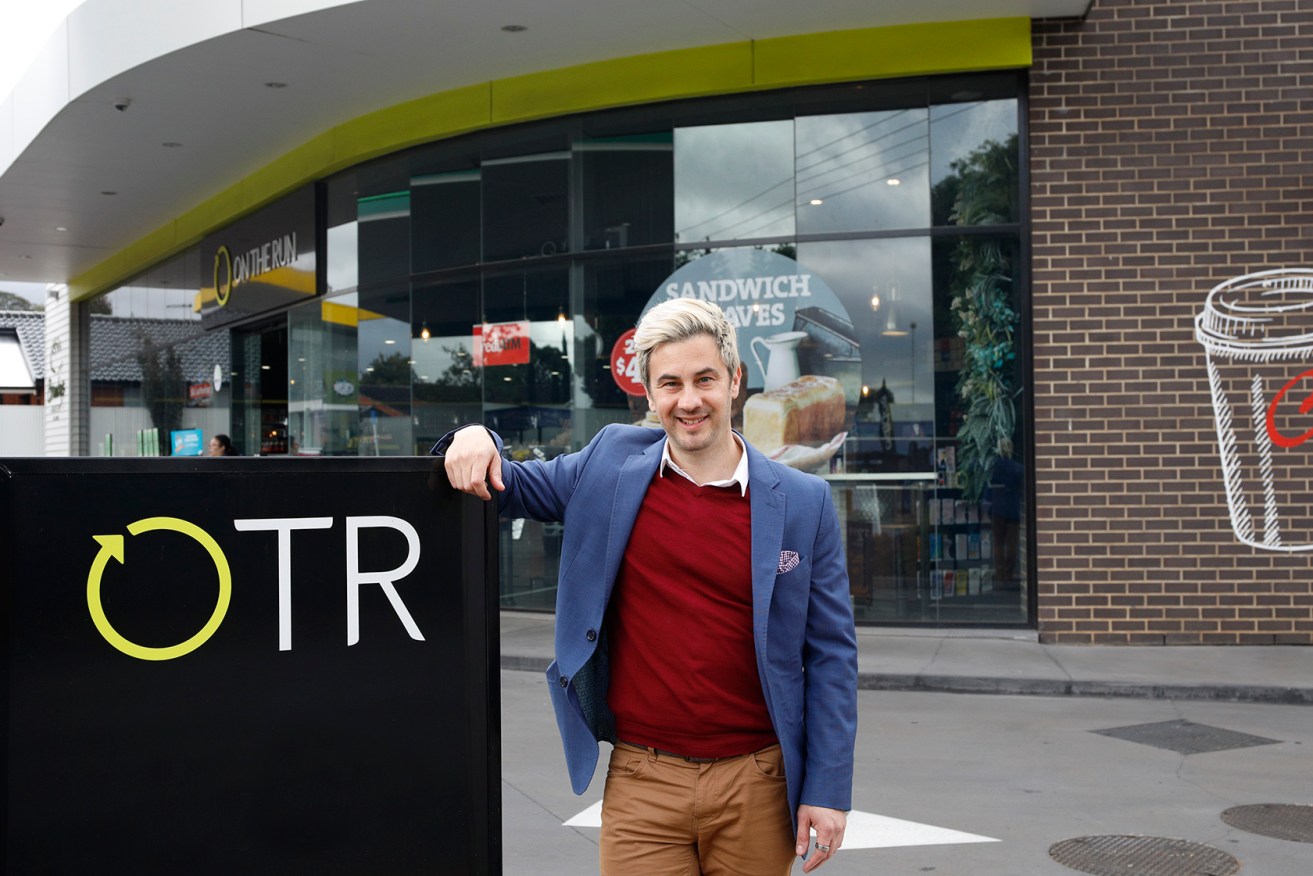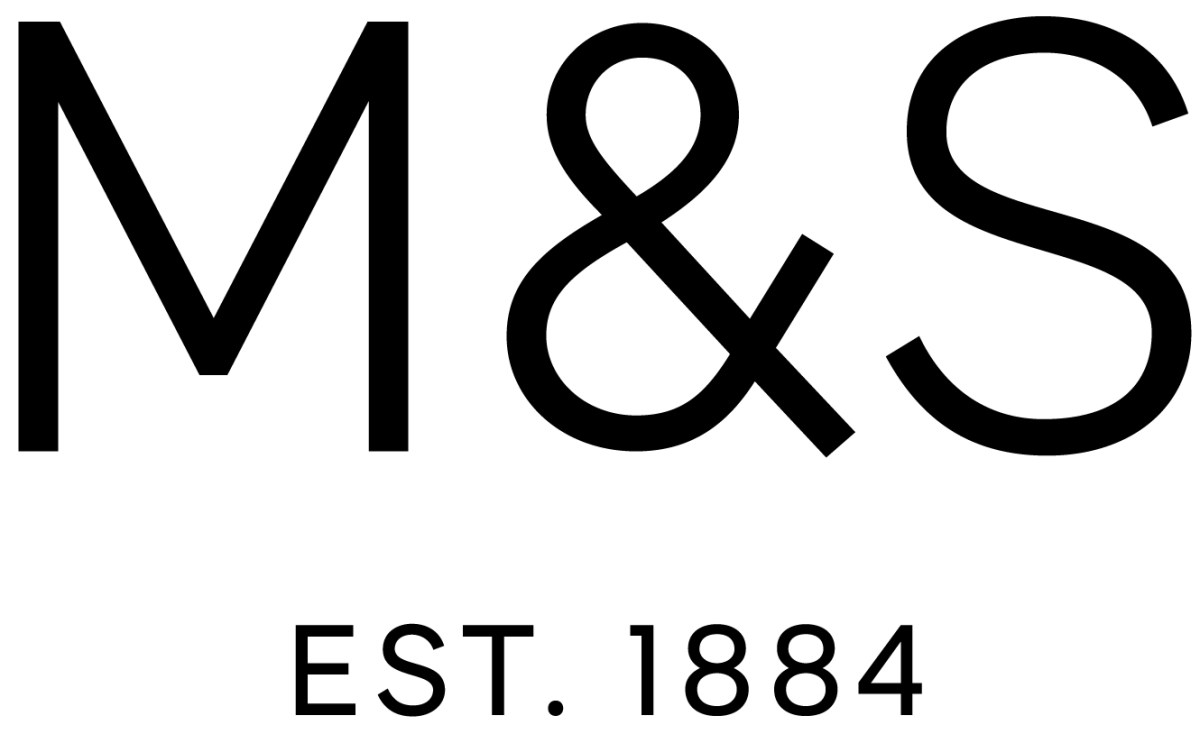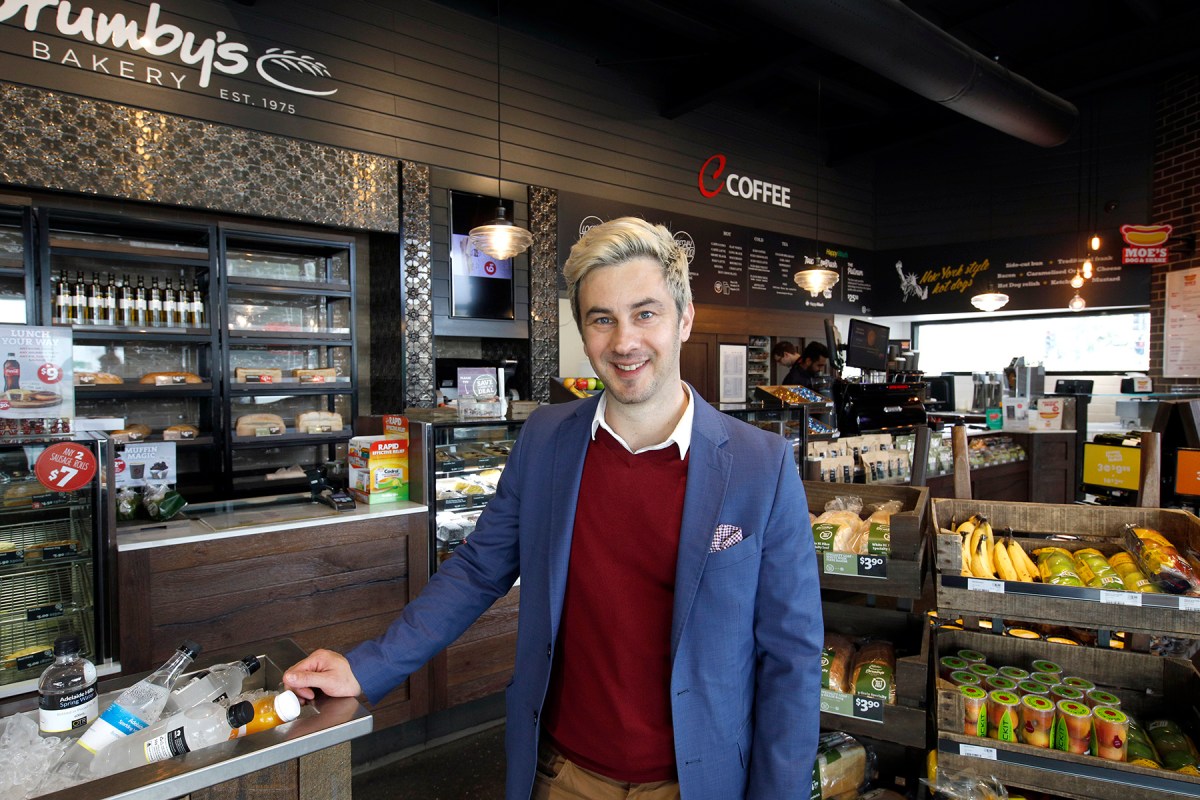Branding the OTR empire: the inside story
From a single service station in Woodville, the Shahin family has grown its On The Run empire to become an unprecedented South Australian retail juggernaut. In this rare interview, the company’s executive in charge of its brand explains the marketing strategy behind OTR’s growth.


Simon Rudduck is in charge of OTR's brand. Photo: Tony Lewis/InDaily
The doors are slowly opening at Peregrine Corporation, the family concern that has become arguably the biggest business story in South Australia this century.
The Shahin family’s central brand – On The Run – inspires both awe and suspicion.
Rebadged as OTR, the network has grown like topsy across the state’s urban and regional landscape to become a dominant retail player in South Australia.
While the Palestinian immigrant family started with a single old-fashioned petrol station, bought in 1984, the Shahin’s vision for OTR went way beyond selling fuel.
Today, OTR has 145 outlets across South Australia (with one in Victoria and more to come); is the state’s biggest seller of barista-made espresso coffee; dominates fast food franchising; has softened its image through a new charitable arm; has built a huge motorsport park near Tailem Bend, and is the key player in the field of convenience retail.
The latter is head of brand Simon Rudduck’s obsession. He has studied the field intensely and brings insights from sociology and history to his ideas about the brand, its potential for growth and, more interestingly, the threats to the seemingly indomitable empire.
He sees OTR’s threats and opportunities through the prism of urban design and social change. The shifting shape of Australia’s urban and suburban lifestyles is intrinsically linked to the strategy that OTR employs.
“The big kind of analogy which is a guiding principle for me right now is that village life was most of human history; we saw that disrupted through isolating suburbanisation; and what we see in that environment is that people buy groceries habitually, maybe a Thursday night or a Saturday, but it’s generally a weekly shop,” he told InDaily.
“They then take it back and they put it into their refrigerator or freezer, and often it’s as much as they would need if a zombie apocalypse was to come.
“And then they live out of that larder in a way in which you would have expected people in the Kimberley’s to have lived in the ‘20s, but not in towns. In towns, even now in Europe and Asia, the consumer behaviour is to buy daily.
“There is an interesting change I think within the social fabric when people do engineer out their life week by week.”
However, that trend is changing – and there is the opportunity for OTR. Global trends show smaller basket sizes in supermarkets, less of what Rudduck describes as “militant planning”, and more opportunities for convenience retail to take some of the big supermarket chains’ market share.
“Supermarkets require people to stay as they are,” he says. “I think there’s a lot of systemic things within Australia that marry up with that well – the mortgage market, the way people sprawl out into suburbs, etc etc.”
But the urban landscape is changing. On The Run is responding to these social tides through its marketing – and is taking a close look at its product range.
From On The Run to OTR
In the beginning, the rights to the “On The Run” brand were bought by the Shahin family from the US, with a relatively garish brand mark with the words spelled out. Originally developed by ExxonMobil and sold to the Canadian convenience group, Couche-Tard, in 2009, the On The Run brand’s Australian rights are still held exclusively by Peregrine.
With a swag of Mobil and then BP service stations under its ownership, Peregrine developed the tag-line “We Never Close” to speak of more than petrol. The idea was to create hubs where people could get whatever they needed, whenever the need – or impulse – arose.
The company did other things to support this approach, such as pioneering proper coffee machines operated by trained staff. The finishes of some stores – polished concrete floors, market-style wooden display crates – were also previously unseen in service stations.
Eventually, Peregrine executive chairman Yasser Shahin wanted the brand’s look to evolve as well, to speak to a broadening and more sophisticated offering. The original brightly-coloured logo (gaudy, says Rudduck) was jettisoned and, inspired by venerable UK brand Marks & Spencer, On The Run became simply OTR in 2013. According to the company at the time, the new brand launch was backed by a $1 million campaign. The physical change in signage cost $1.5 million.
Adelaide designer Rudduck, then a contractor, managed the change, eventually being made a permanent staff member as head of brand. He now holds the title “brand architect”.
While he recognises there is some negativity about the brand – Peregrine is among the tallest of poppies and have had moments of fractious relationships with the media and some local communities – he says the company’s values keep him motivated.
As with many immigrant stories, the business is highly personal and based on a desire by the Shahin family to make a mark.
Even in a sector as prosaic as convenience, Rudduck sees in Peregrine a desire to raise the bar.
“If we wanted to design the stores to be just money machines, we wouldn’t be putting down polished concrete floors,” he says. “Why would we worry about marble benchtops? Who really cares that our coffee is never more than two weeks from when it was roasted? All of that is about pride.”
And hence the change to the logo.
Yasser Shahin and former chief operating officer Michaela Webster had visited the UK, where both venerable and new brands were transforming convenience, particularly in the food sector.
That included trusted company Marks & Spencer which had recently trimmed down its brand. M&S and other innovators like Pret A Manger and high-quality fast-food chain Leon were transforming how people understood convenience food.

The OTR sites were always a visually busy concern, with a multiplicity of brands, starting with BP, and cascading through a variety of franchises and sub-brands, including those developed internally such as C Coffee and Moes Dog and Shake.
“Yasser was so enamoured of Marks and Spencer, particularly that it was factored into the briefing of what he wanted OTR to look like in the market here,” Rudduck says.
But it wasn’t just about a cleaner brand – it was about marrying the brand image with a higher vision for the previously humble petrol station.
“It’s always been in Yasser’s mind… a long time ago, maybe before most people, he realised you can’t just run a petrol station – you have to lift it somehow. A good 20 years ago, barista machines went into the stores and he put a red ‘C’ on it. I don’t even know if that had been done overseas at that point. All of his business mentors thought he was crazy. He went and found a local supplier, Aroma Fresh, and they worked on a blend that was a great balance for white and black coffee. Long before most people were drinking barista-made coffee, he was saying this is how we’re going to drink coffee now.”
Rudduck says the simplified brand increased OTR’s recognition.
“They were worried about the lack of awareness of the On the Run brand in market. Many people referred to the place as BP; they thought it was just the brand of the store that BP had in there.
“The change is stark. We found that awareness of the brand increased by a satisfying amount for us all.”
“Simplicity is a big part,” he explains. “When we were developing the logo we were looking closely at how it would look on the roadside, how it would look above a shop, how it would look in conjunction with branding like BP.”
Engineered for more than sales
Innovation and complexity increased over the years.
OTR became a hub for numerous other franchises: the company brought Krispy Kreme to SA and is the master franchisee for Mexican food chain Guzman Y Gomez, for example.
The fit out of stores has also been reconsidered, subjected to experimentation.
Rudduck talks about the signals in the physical environment that, almost subconsciously, gives the retailer “permission” to sell something.
He explains it this way: “To sell Mars Bars, you can do that under fluorescent lights in a white room. To sell freshly-baked bread or barista coffee there’s an element of theatre that’s required. You need to stage it.”
“We’ve been studying signifiers a lot lately: what’s the signifier that is giving us permission to sell something? Clearly, we have permission to sell fuel. A strong brand like BP actually does factor in people’s decision to come to us.
“With coffee, it’s the machine itself. We’ve seen in the last 10 or 15 years, retailers understand the way they light their stores matter, finishes matter – if you have authenticity there you are more likely to believe in the authenticity of the offering that’s being served up.”
A few years ago, Peregrine built a store on Fullarton Road which, from the exterior, had the signifiers of a regular OTR service station but, inside, was more redolent of a hipster market. The approach “allowed” the outlet to sell things OTR didn’t focus on elsewhere: fresh bread and organic snacks, for example.
“We used timber on the front counter, we had freshly baked bread going in from Brumby’s, we had pendant lights, all of the sorts of things you would expect to see somewhere like the Holland Street market.”
It had an impact on purchasing decisions, so OTR built similar stores elsewhere. But it wasn’t just about making more money from premium products – it was a live retail laboratory.
“In many respects, I guess people are watching a brand working itself out on the fly. OTR is a very personal brand to the directors of Peregrine Corporation, particularly Yasser who, when he goes into a store as it’s being built, you can see it’s not just about how well this is going to do commercially – this is also an expression of himself.
‘If we were going to engineer the stores to simply make as much money as they possibly could, they would look very different.”

Peregrine’s “brand architect” Simon Rudduck at the Fullarton Road OTR. Photo: Tony Lewis/InDaily
The future is coming
Rudduck sees OTR increasingly focusing on convenience, with a growing opportunity for food beyond the salty and sugary snacks that have traditionally dominated the sector.
The tagline for OTR has changed to reflect this: once it was “We Never Close”; now it is “Making Life Easy”, complemented by an app through which customers can do things like order coffee in advance. It’s a statement that Rudduck says not only sends a signal to the customer, but better helps guide the company’s decision-making.
The supermarket sector, as well as facing changes in consumer habits mentioned previously, is also entering a period of renewed competition – a battle that is likely to leave some players bloodied as the likes of Kaufland enter the market. The consequences of that fight is likely to affect players like OTR.
“Everything threatens everything within retail like this,” Rudduck says. “I think it’s a threat to our visions of growth.
“If we want to grow exponentially beyond where we are now, there are probably two or three things that will threaten us: one is changes within retail which nobody saw coming, something like consumer behaviour becoming so used to ordering delivery that it defaults to that. If that’s the case, we need to think carefully about how we will exist in that world.”
The other potential threat is falling fuel consumption due to more efficient vehicles and, inevitably, the growth of the electric vehicle market.
One bulwark against this change is building the food options available.
“If we wanted to range precisely what sold like hotcakes (today), it would be versions of hotcakes – it would be donuts, it would be chips, and we find that still is something people come to us for because it’s impulse. But we would also love to solve other occasions – so presenting more and more lunch options for people, breakfast options for people, and even things they can take home for dinner.
“Where we want to grow ourselves is towards the convenience side of the business because it’s far richer, it’s more sustainable and that will involve, from now for the next five to 10 years, some sea changes in how we present ourselves to the public and probably how we design our sites.”
A response to the delivery trend is under intense discussion.
“We have been watching the trend closely for about three years. Delivery has a number of major business challenges, yet there is no doubt it is changing customer perceptions of what is possible, which makes it an exciting place to innovate. With OTR’s goal of making life ever easier, delivery is one of the options we are playing with. More specifically, we want to make it sustainable and valuable for our customers.”
With one outlet to about every 10,000 South Australians, the company seems well-placed to deal with this new world.
And its reach is growing. The brand is marching into western Victoria and, inevitably it seems, beyond.
The company is now searching for the next edge to stay ahead of the market, just as it was with its shiny C coffee machines.
“That’s an example of something being ahead of market trend, but it has commodified now, and we can find it in most places. It’s expected. That’s a victory in itself really.
“Now leaning into the future it’s more exciting and less obvious what a convenience store should be in, say, 2020. We see the market going in all different kinds of directions.”
Watch this very crowded space.




